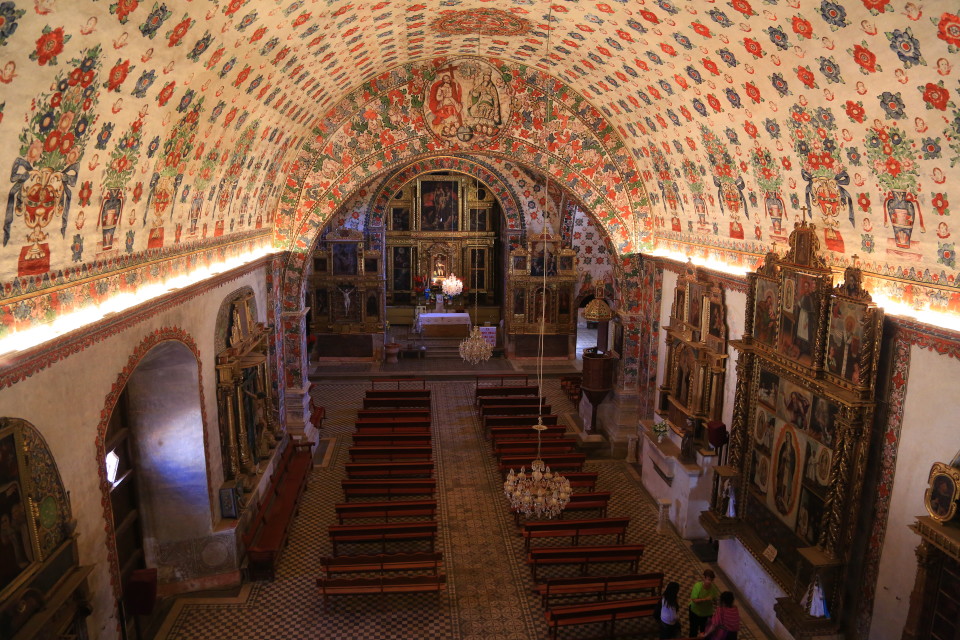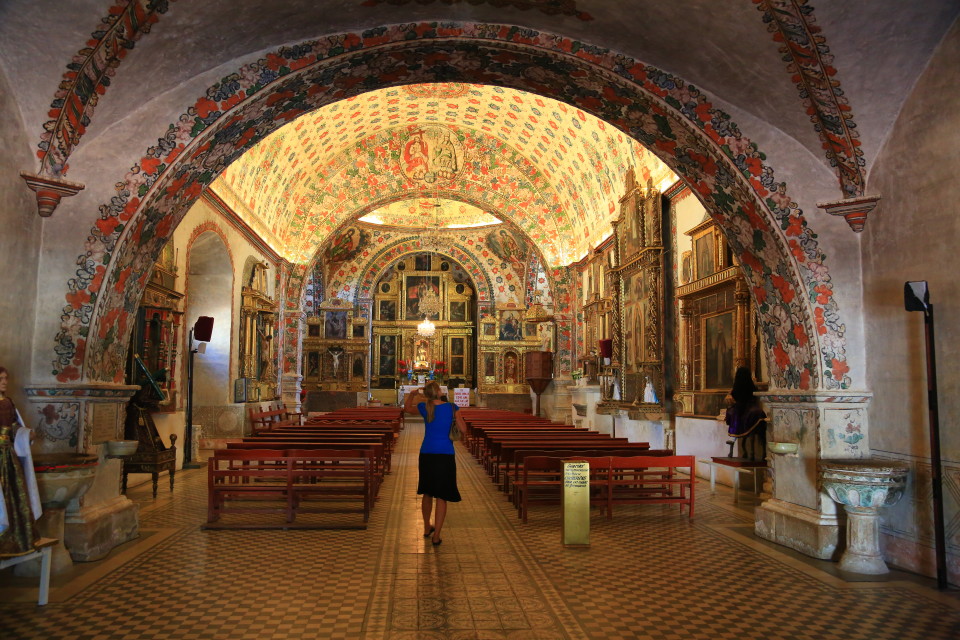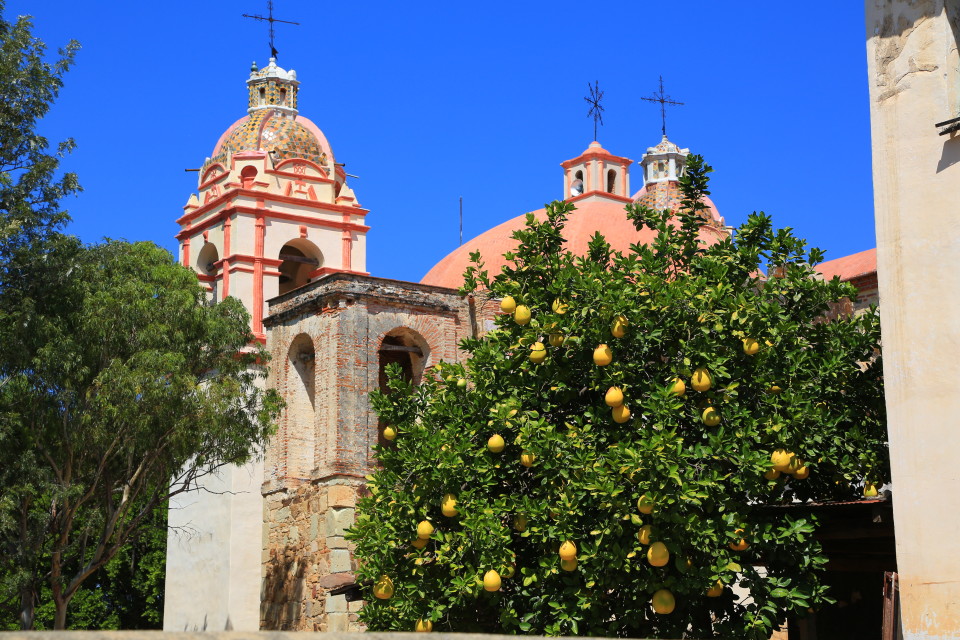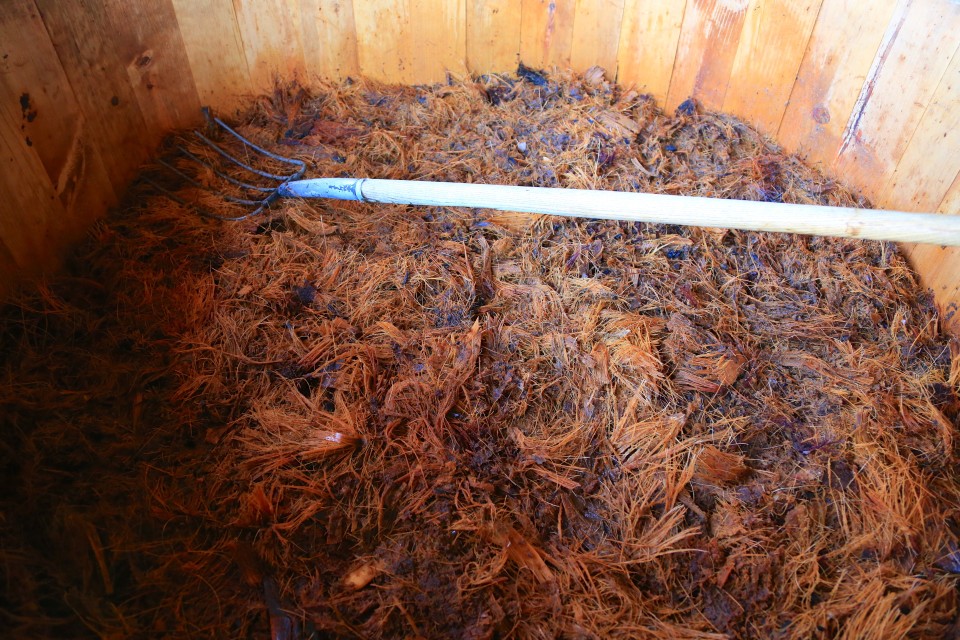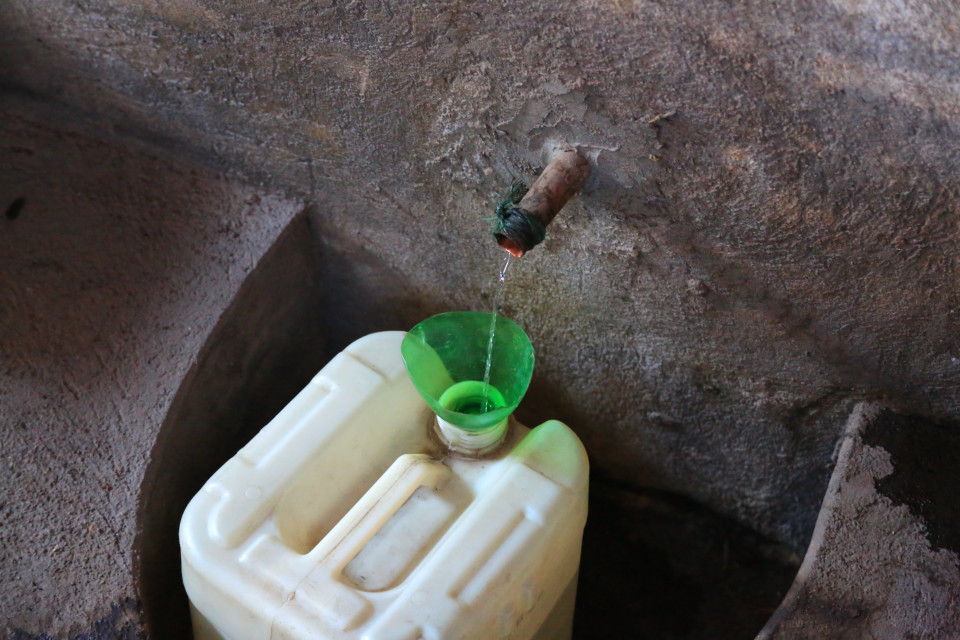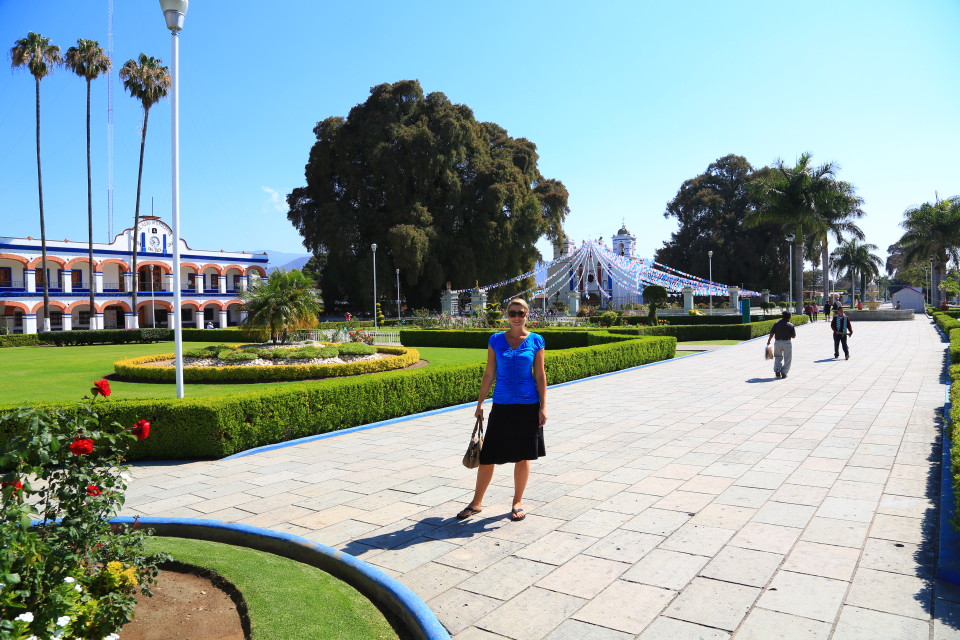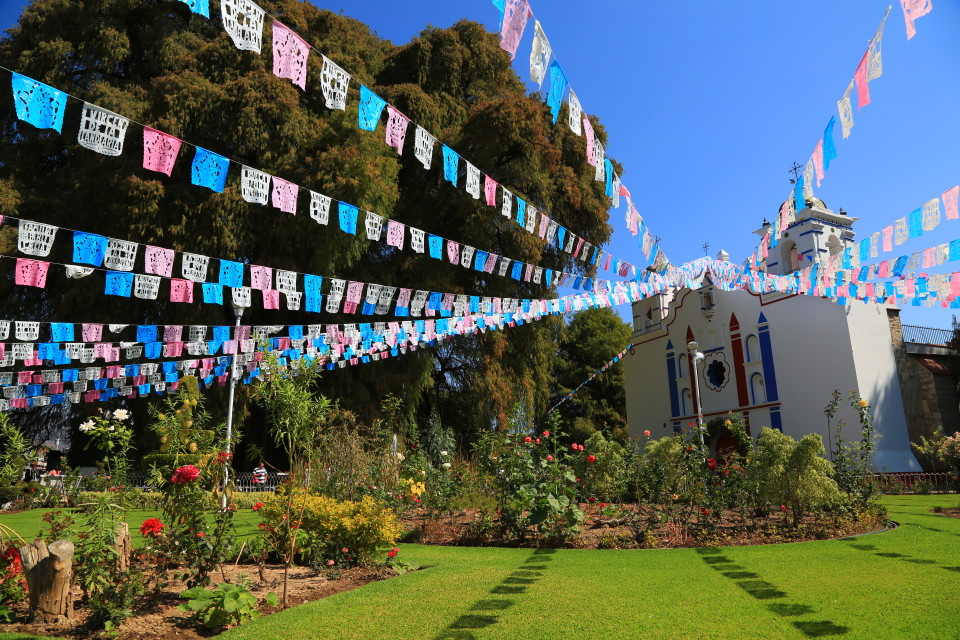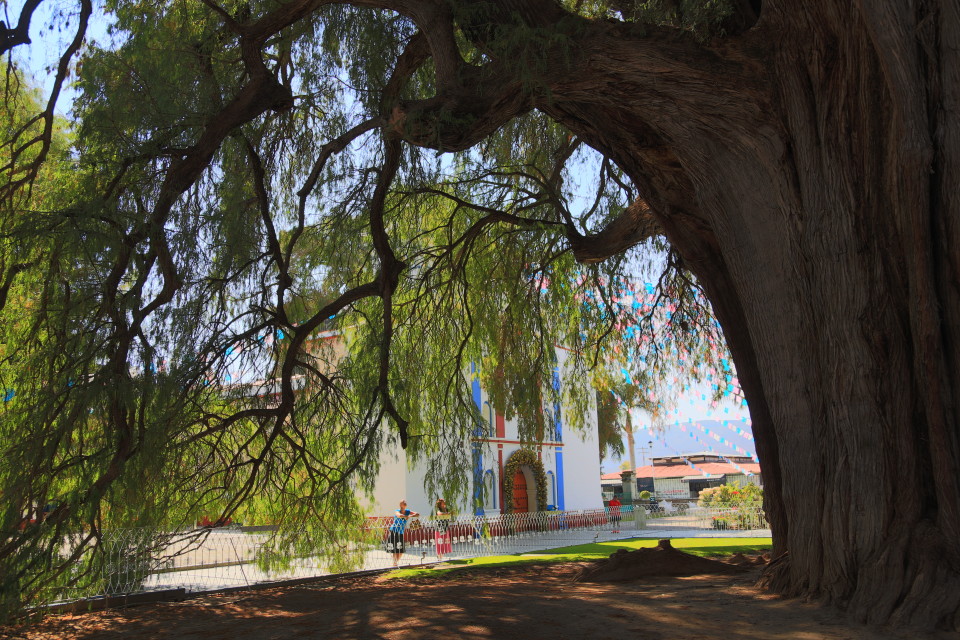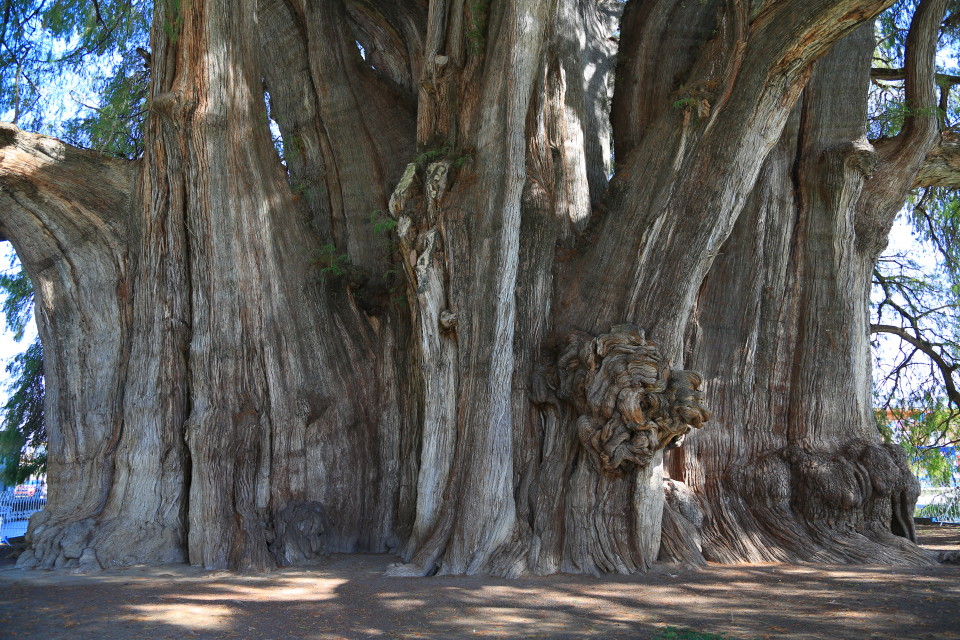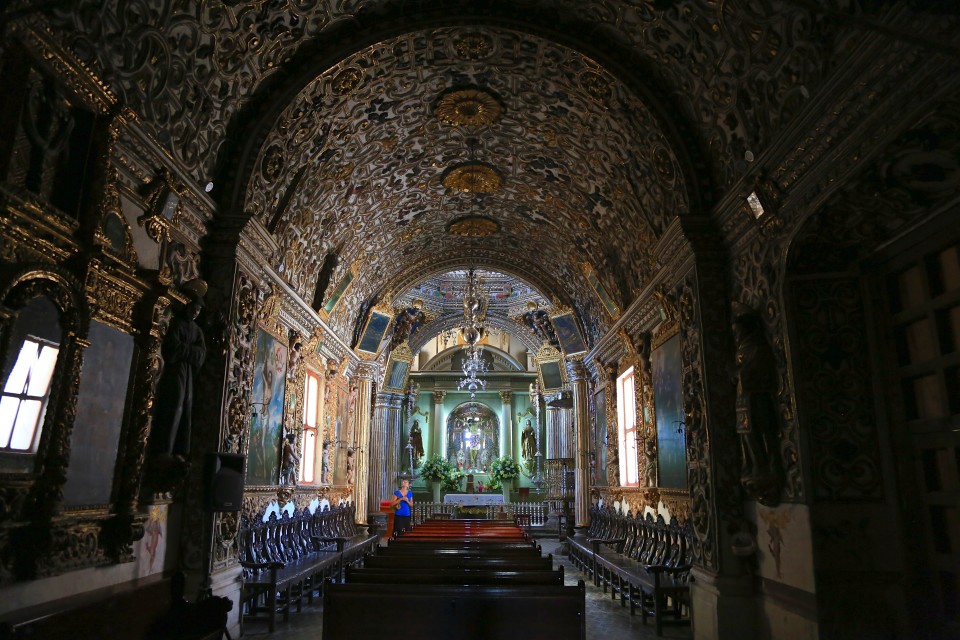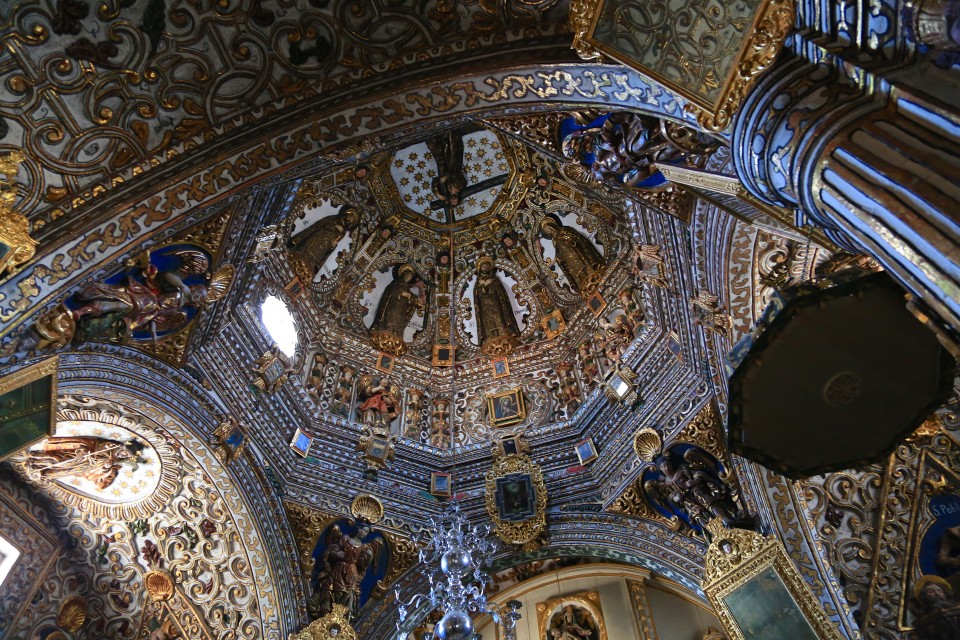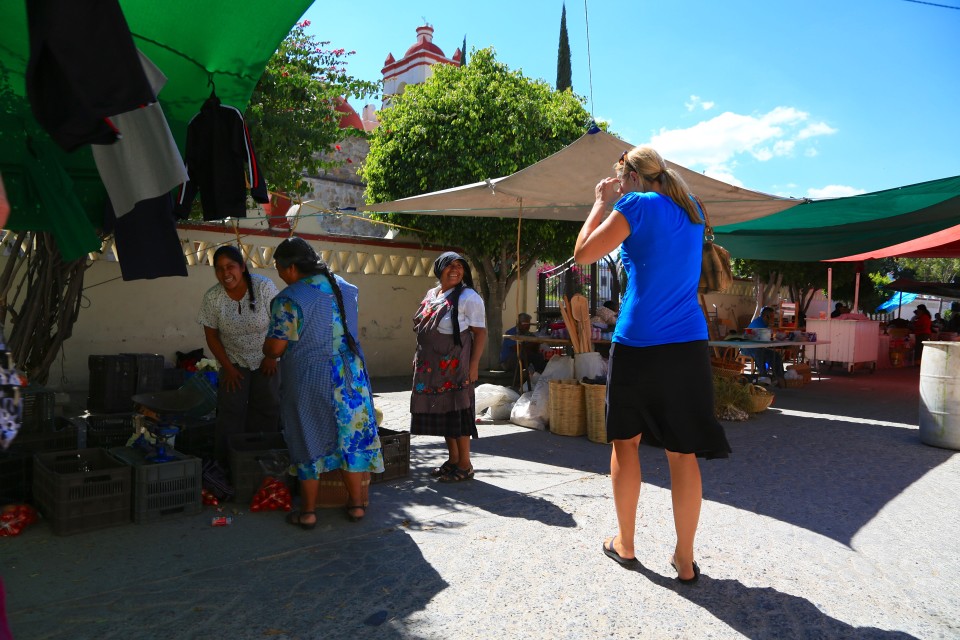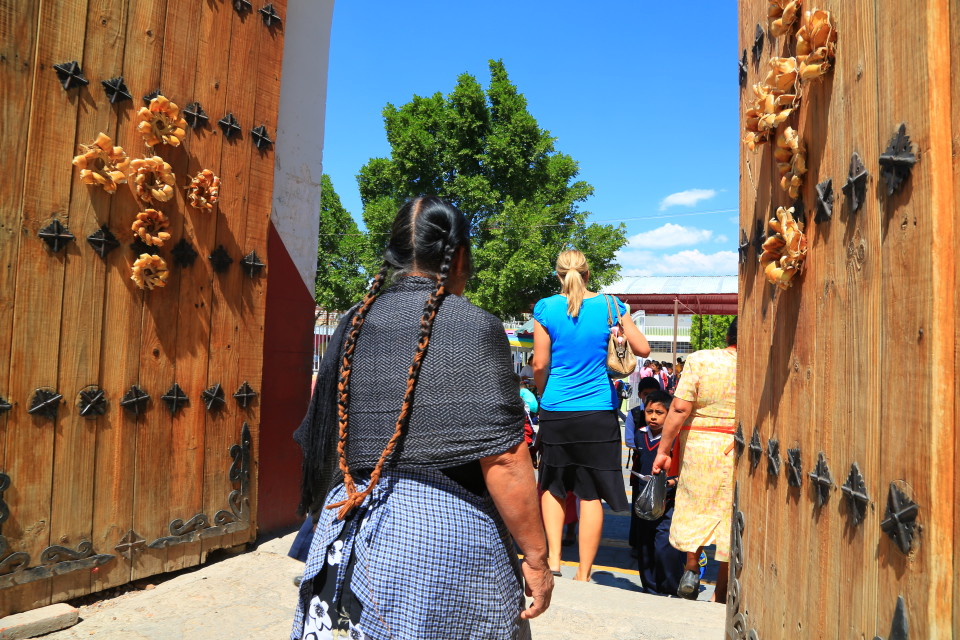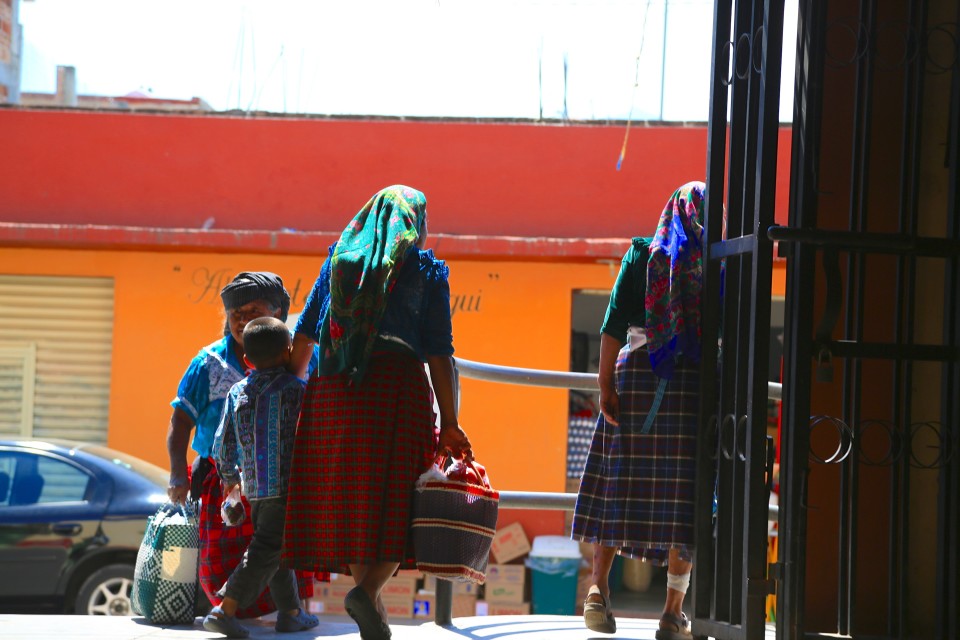There are so many great places to explore around Oaxaca, and we just got to some of them while my Mom was visiting. However, if you have the time the villages are definitely worth exploring to get a sense of how the fifteen plus indigenous groups that inhabit this area live.
Teotitlan del Valle
This Zapotec village 17 miles from Oaxaca is known for its weavers and its food. All the wool is dyed in the area with natural dye. As you drive into town you can see the colorful wool drying along the hills. The Zapotec women do not like their picture taken, so make sure you ask permission. Most of the time they will say no (which is their absolute right). We found that it was a better experience to just put the camera away so the people relaxed and enjoy the villages and markets without many photos.
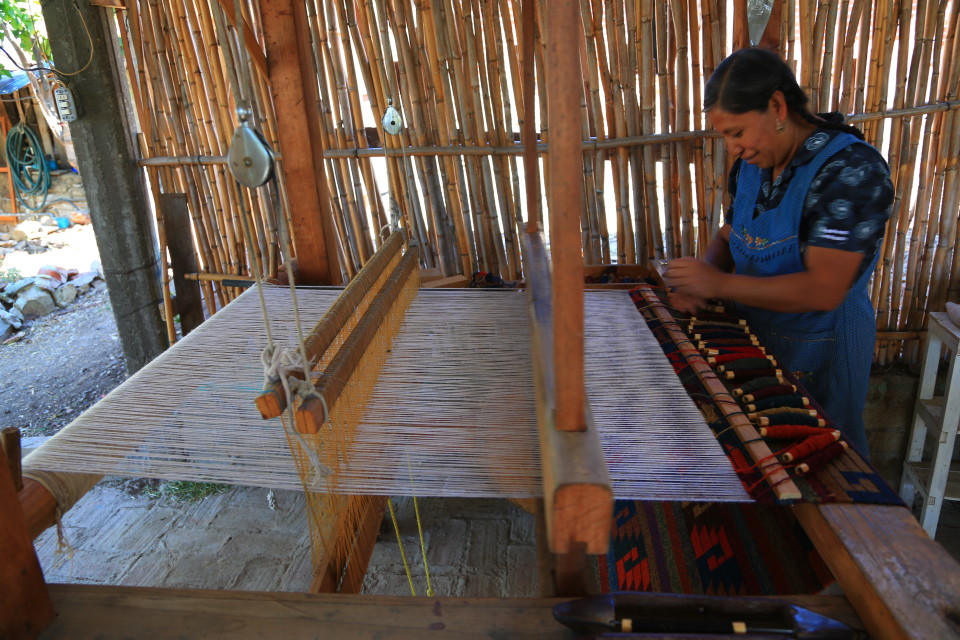
A Zapotec woman weaving. We bought a few carpets here, one is in the XP. The Zapotec culture is matrilineal, and it is full of strong women. I really enjoyed learning about their culture.
Tlacochahuaya
The main thing to see in this village is the church. And what a church! I have seen A LOT of churches in my travels, but this one surprised me and had all of us impressed.
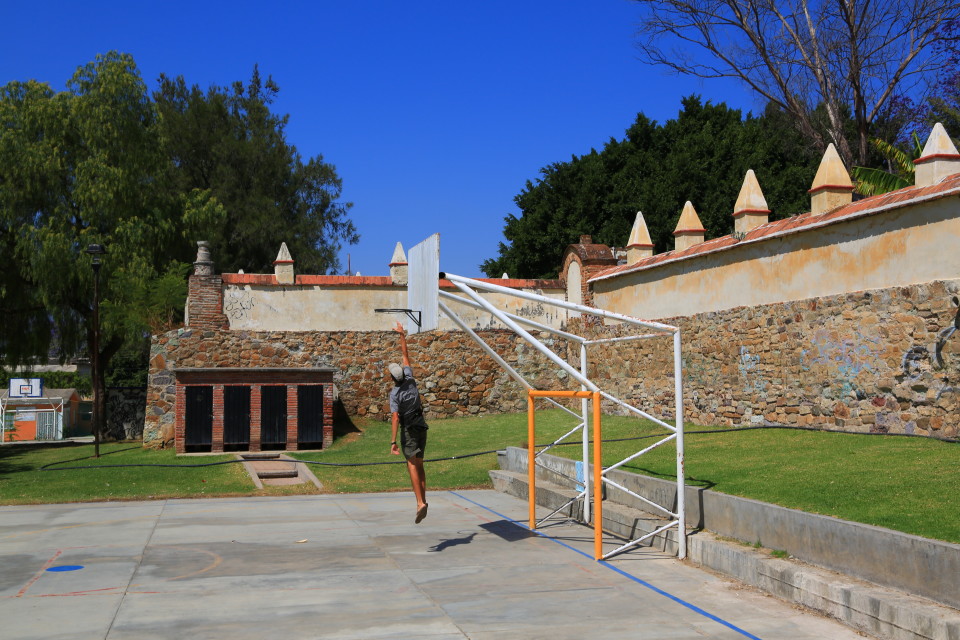
Sam assumed that because everyone was (well short) in the villages, the basketball hoops would be smaller. He had a few failed attempts at touching the rim to the villagers and my entertainment.
Matatlan
This town is famous for its mezcal, and as you drive to it you can see why. The countryside around it is full of agave plants and there are places selling mezcal everywhere. We told our cab driver we hired for the day that we did not want to go to a touristy place. He took us very seriously. He drove up to a very small distillery in the not so pretty part of town and asked them if we could walk around. They seem fairly surprised to have three gringo visitors, but were wonderful and showed us from start to finish how mezcal is made. We even got to eat fresh sweet agave and drink 120 proof hot mezcal straight from the distillery. The entire “tour” was in Spanish, so this is what I got given my not so fluent knowledge of the language.
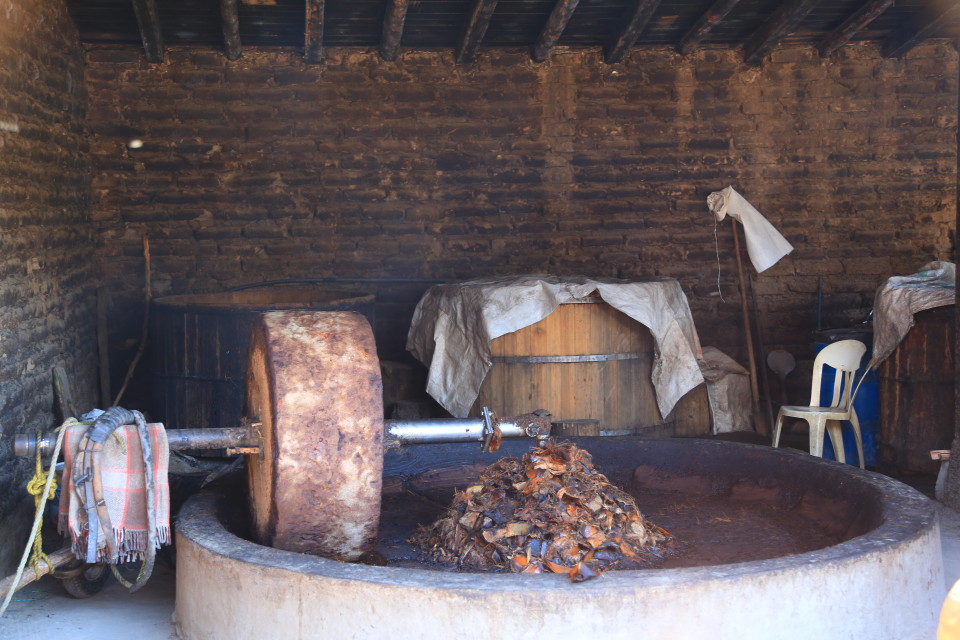
A horse gets hooked up to the press and they break up the agave to get the good stringy core that ferments.
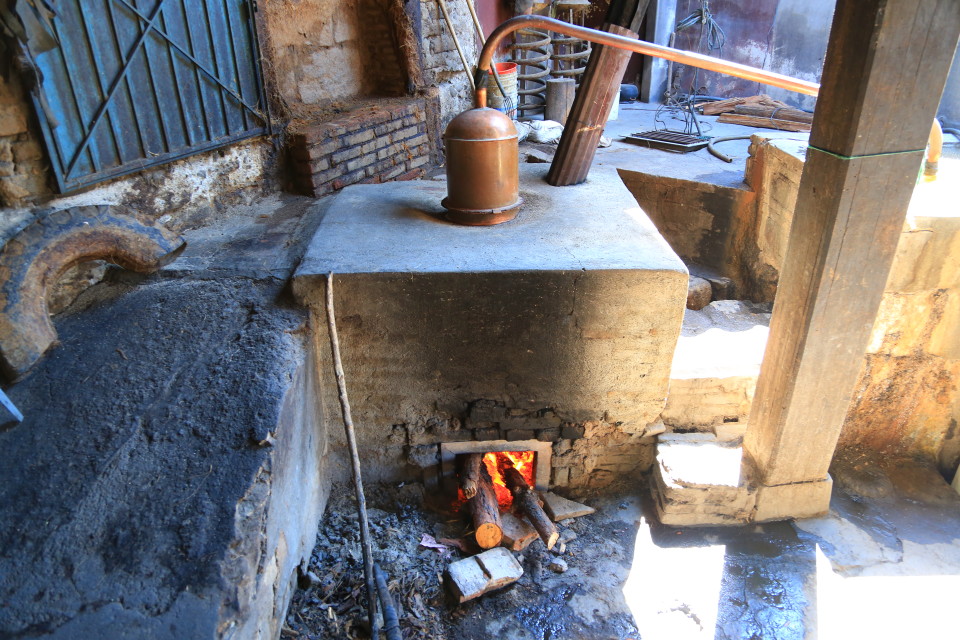
It was so interesting learning how the distillery worked, especially since I only understood a little bit, I filled in the details with my imagination.
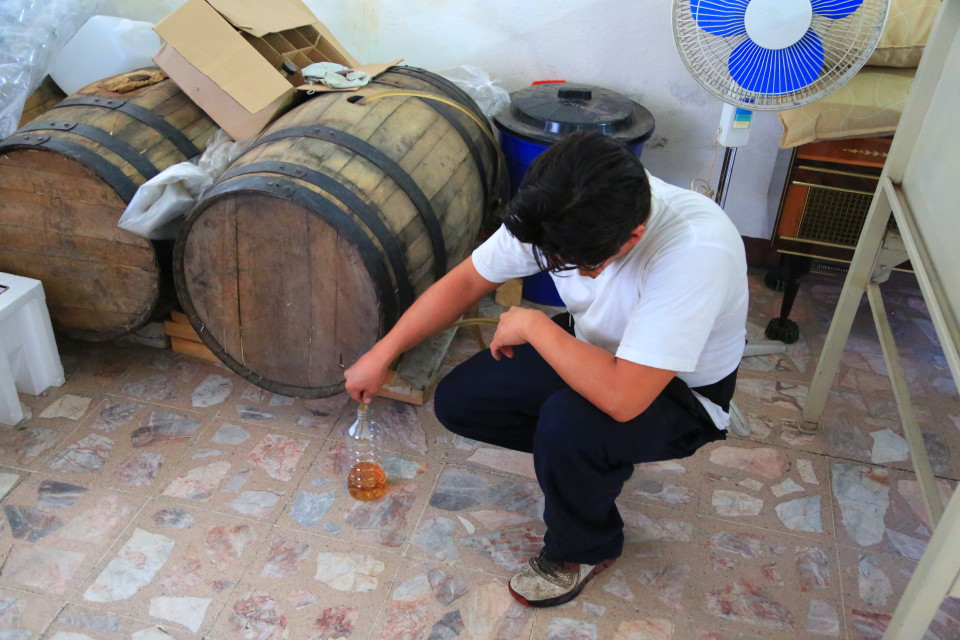
We tasted some of their family stock and convinced them to sell us some. It was super smooth and really good. We had to put it in water bottles.
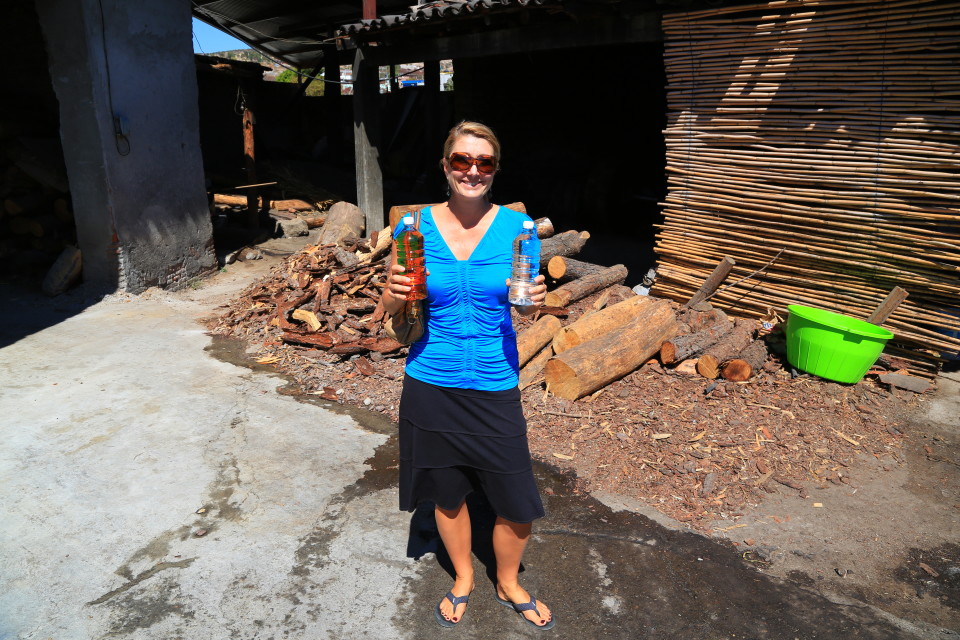
Score! Sam almost drank out of the clear mezcal bottle one morning thinking it was water….I just watched and waited, I am a bad wife =)
El Tule
This town has a great place to camp called Overlander Oasis where we stayed after my Mom left. While my Mom was with us we came to see the cute town square and the famous El Árbol del Tule, a tree with the widest tree trunk in the world. It was really impressive.
Tlacolula
This town is most famous for its Sunday market. It also has a very impressive (if somewhat busy) church. I stocked up on fruit, Oaxacan chocolate and spices here and scared some children with my massive height.














